After World War II, as part of its occupation of Japan, the US prohibited any aircraft research and development and split the major aircraft companies into smaller enterprises. This lasted until 1952, when Japan regained its sovereignty and resumed its authority to manufacture aircraft.
As the Japanese aerospace industry matured, it focused primarily on military aircraft and supplying critical, complex structures to global players such as Airbus and Boeing, including building a third of Boeing’s 787. In 1964, Japan attempted to compete in the commercial aircraft market with its YS-11, but due to a combination of economic and political issues, the business was unprofitable and production of the YS-11 was ended in 1972.
Nevertheless, co-production with American and European manufacturers has continued to stimulate the development of Japanese aircraft design and engineering. According to industry analyst Richard Aboulafia, focusing on a broad portfolio of important technologies instead of building an aircraft has, in many ways, been the secret of Japan’s success. Although the market is already dominated by two players, Brazil’s Embraer and Canada’s Bombardier, neither of whom are willing to concede territory, many experts believe the MRJ will be a success. The jet made its first public demonstration flight in July at Britain’s Farnborough International Airshow 2018 and has already racked up 387 orders.
Aircraft Certification requirements for civil aircraft are derived from the International Civil Aviation Organization (ICAO). Each ICAO contracting state then establishes its own legal framework to implement the internationally agreed standards and recommended practices.
A Civil Aircraft Industry Strategy
After the disappointment of the YS-11, the government of Japan developed a strategy for its civil aircraft industry that, besides joint ventures with international manufacturers, involved forming a consortium of Japanese aircraft manufacturers for developing and producing new aircraft and providing government financing for aircraft R&D programmes.
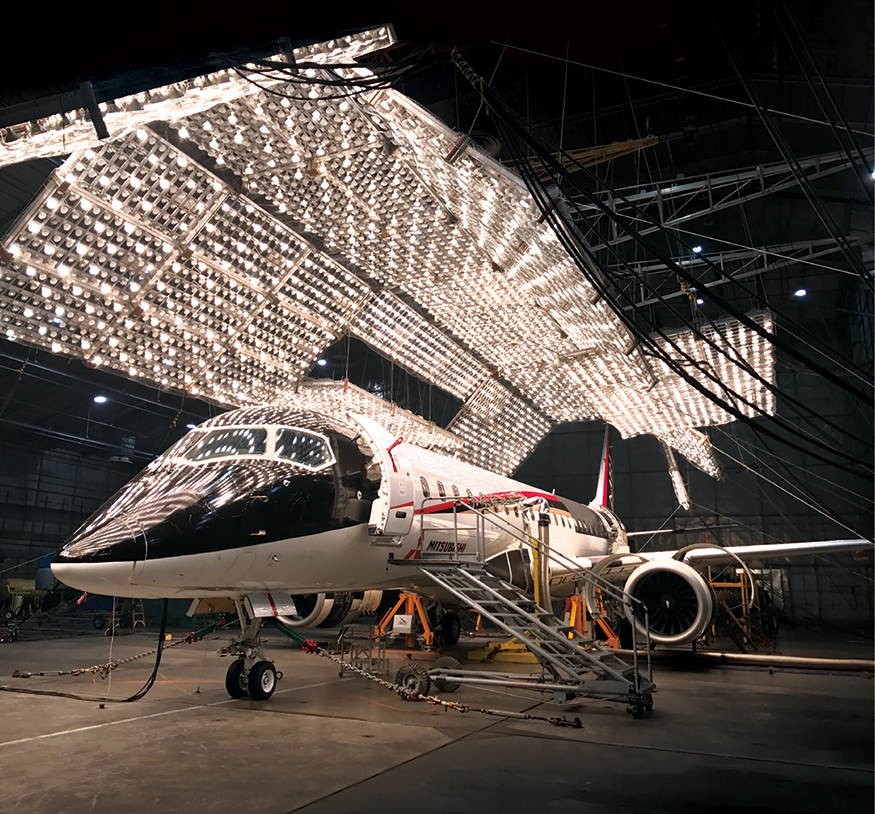
Japanese design, craftsmanship and quality
Japan is renowned for its technological prowess, but the country also has a strong tradition of aircraft design, going all the way back to pre-World War II and Jiro Horikoshi, who is known to many as the father of Japanese aircraft design.
Born in 1903, Horikoshi began experimenting with aircraft design at the University of Tokyo and in 1936, as an employee of Mitsubishi Heavy Industries (MHI), his first successful aircraft, the Mitsubishi A5M, went into mass production. In 2013, Horikoshi was immortalized by animation master Hayao Miyazaki in his film The Wind Rises, a fictional animated biography that follows the progression of his designs.
Along with a strong design tradition, Japan has many famed business practices that focus on doing things the right way, such as total quality management (TQM), Kaizen (continuous improvement) and Monozukuri, which literally means ‘production’ or ‘making things’. Monozukuri also embodies a synthesis of technological prowess, know-how and spirit of Japan’s manufacturing practices.
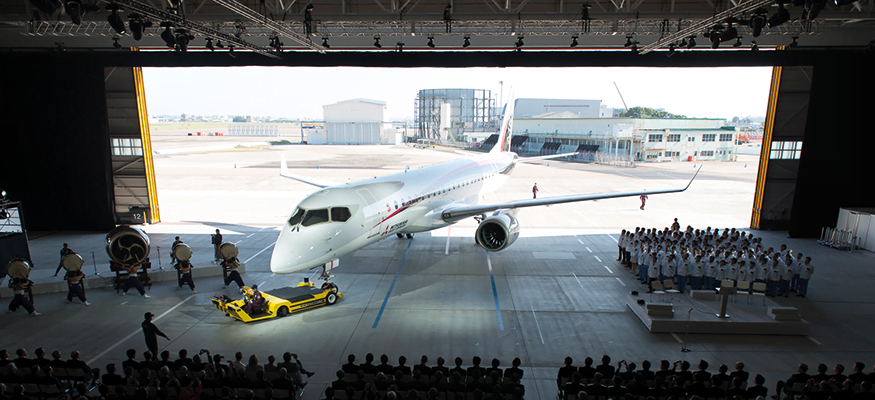
Monozukuri could be characterized as more of a philosophy than a technique or method. It underlines that manufacturing should be in harmony with nature and should be of value to society. When an item or human effort is used, the balance between production, resources and society should be maintained. Monozukuri also encourages workers to ‘bring their mind to work’. They are fully empowered and trained to deal with different situations creatively. This creates an elevated sense of ownership and instils a sense of pride and passion for the work.
The combination of these design, engineering and manufacturing traditions is hard at work on the MRJ, which will be produced at Komaki Airport in Nagoya, Japan. The new plant will produce ten aircraft per month.
What makes the MRJ design special?
With the goal of achieving advanced energy efficiency and aerodynamics and superior passenger comfort, the MRJ started with a clean-sheet design. The engine is Pratt & Whitney’s Geared Turbofan™, which is optimized specifically for the MRJ and burns a fifth less fuel than an aircraft of similar size. At the same time, the combination of a streamlined nose, low-drag fuselage, low-drag tail cone and optimized wing and engine configuration increases fuel efficiency and makes for a smoother, more fluid ride.
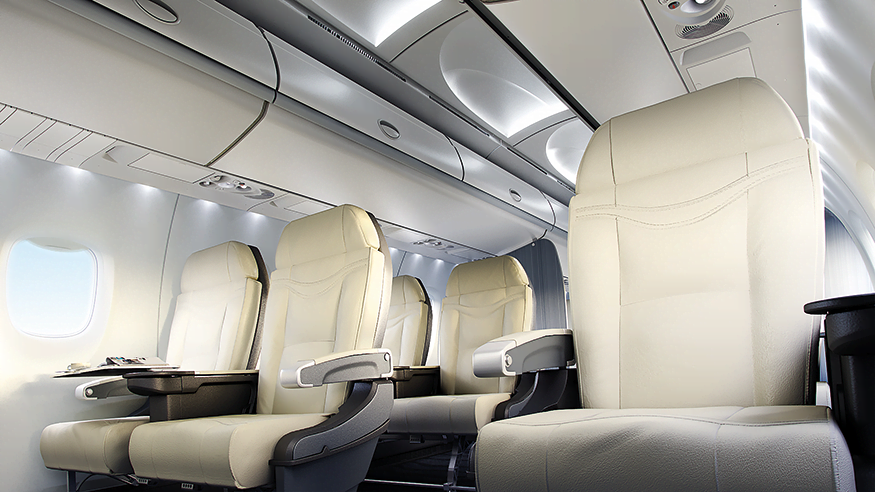
In the cabin, Mitsubishi Aircraft Corporation (MITAC) also started with a clean sheet. They took the cargo hold out of the belly to increase passenger space and widened the seats and aisles. That means a generally more spacious cabin and more legroom. They also expanded the overhead bins and added LED lighting for a more relaxed and comfortable flying experience.
The combination of the latest engine technology and advanced aerodynamics technology greatly reduces noise at take-off and landing, compared to conventional airplanes. Noise levels are expected to be significantly lower than the ICAO regulations require.
The Journey Towards Certification
Currently in the certification phase, MITAC is conducting a series of tests at Moses Lake testing facility near Seattle, including tests for safety, functionality and noise. The Moses Lake engineering team works closely with another engineering team in Nagoya, Japan that allows for a constant flow of communication. “Any data that needs crunching, engineering that needs to be worked out, we can hand it over to Japan and they can take a stab at it while we’re asleep,” says one of MRJ’s operations support engineers.
One of MRJ’s top certification priorities is the ICAO Annex 16 exterior take-off and landing noise test. Noise measurements are made on the apron.
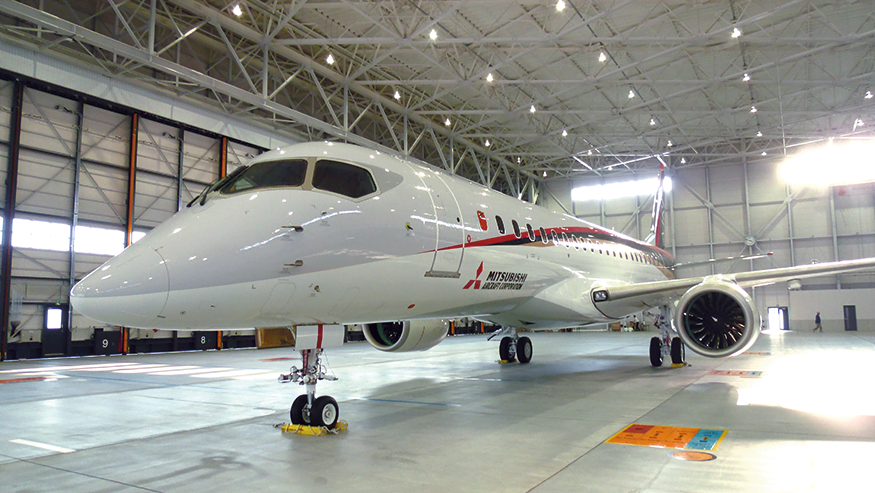
LEARN MORE
LAN-XI DAQ MODULES
For measuring noise on the apron, LAN-XI modules are distributed on the ground, enabling faster multichannel measurement across a wide area with fewer engineers. During ramp noise testing on the ground, the LAN-XI modules must not be too close to the aircraft, so extended LAN cables make it possible to effectively record and make real-time measurements under the aircraft body.
To evaluate cabin noise, MRJ uses Brüel & Kjær’s sliced wheel array and hand-held array , both of which are mounted with multiple microphones, to perform noise source identification (NSI). With NSI they can test for leakage of noise into the cabin through the cabin wall and interior trim. This helps identify areas of the aircraft that need continued analysis or further design.
LEARN MORE
MEASUREMENT MICROPHONES
For any other on-site noise or vibration measurement, LAN-XI can be used for investigating any issue, as it is easy to transport from place to place to make quick real-time measurements. This helps keep the development of the aircraft on schedule.
Meanwhile, the people of Japan eagerly anticipate their first commercial passenger jet, the opportunities it will afford and the country’s long-awaited return to the commercial aircraft industry.
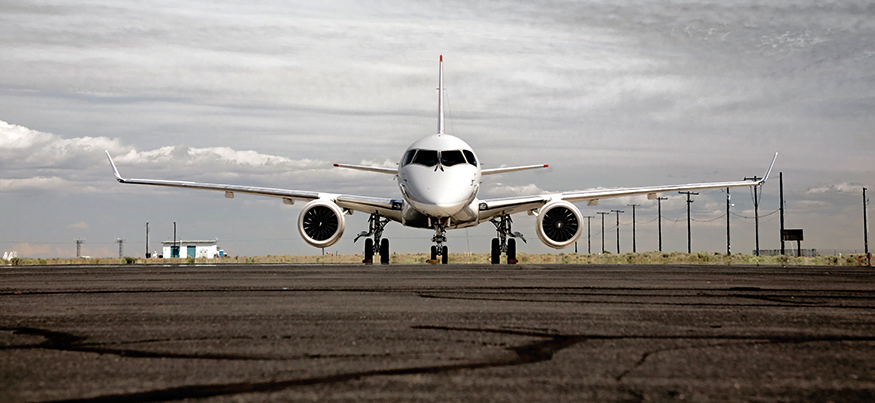
It all started in shipbuilding
In 1884, the founder of Mitsubishi, Yataro Iwasaki, took out a lease on the government-owned Nagasaki shipyard and started a full-scale shipbuilding business. Later the business became Mitsubishi Shipbuilding Co. and launched as Mitsubishi Heavy Industries in 1934, establishing its position as the largest private firm in Japan, manufacturing ships, heavy machinery, railroad cars and aeroplanes.
RELATED ARTICLES

Suscríbase a nuestro boletín informativo y recibirá las últimas noticias de B&K sobre sonido y vibración

